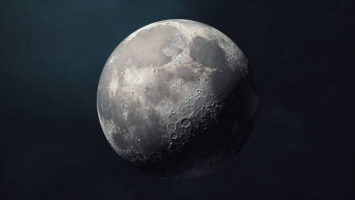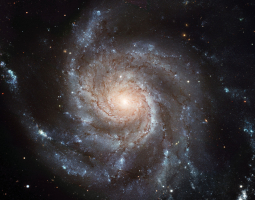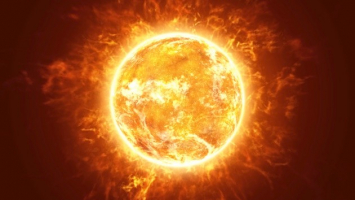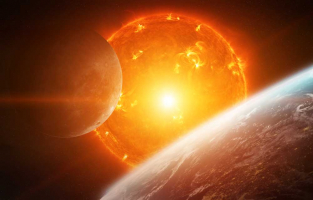Top 12 Questions About the Sun Answered
The Sun, a blazing disk of hydrogen and helium, serves as the Solar System's gravitational home to Earth and all the other planets, dwarf planets, moons, and ... read more...space objects. According to solar experts, the Sun is around 4.5 billion years old. Following the birth of the Sun, a disc of cosmic debris encircled the newborn star. The Solar System's planets were formed from this stuff. There is still much to learn about the Sun, but solar astronomers have answered several fundamental questions about its structure, what makes it tick, and its impact on the rest of the Solar System. Here are some of the most often asked questions regarding the Sun, along with their answers.
-
The sun is a massive ball of gas and plasma, but what precisely is it comprised of? According to NASA, the majority of the gas — around 92% — is hydrogen. In the sun's core, it is transformed into energy. The energy is released into the solar system as heat and light as it flows outward through the inner layers of the sun.
Gravitational forces generate enormous pressure and temperatures at the sun's core. The sun's temperature in this stratum is around 27 million degrees Fahrenheit (15 million degrees Celsius). Helium is formed when hydrogen atoms are squeezed and fused together. This is known as nuclear fusion. As the gases heat up, atoms disintegrate into charged particles, converting the gas to plasma.
The energy is transported into the radiative zone, largely in the form of gamma-ray photons and neutrinos. According to Sten Odenwald on NASA's Ask the Space Scientist, photons can bounce around at random in this zone for a few thousand to a million years before reaching the surface.
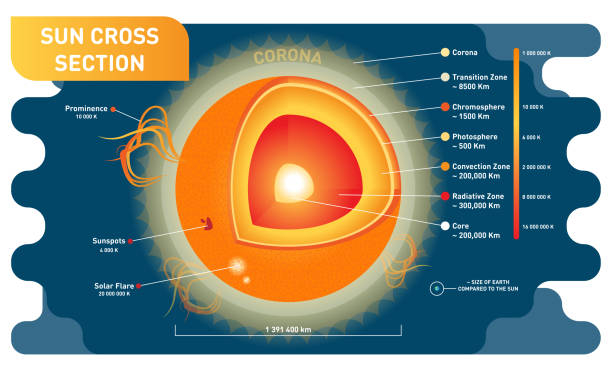
istockphoto https://www.youtube.com/watch?v=LuT7RF8gWFA -
According to NASA, the temperature of the sun ranges from roughly 27 million degrees Fahrenheit (15 million degrees Celsius) in the core to just around 10,000 degrees Fahrenheit (5,500 degrees Celsius) at the surface. According to NASA Space Place, the sun emits more energy every 1.5 millionths of a second than all people consume in an entire year. The sun's core reaches temperatures of roughly 27 million degrees Fahrenheit due to continuous nuclear fusion (15 million degrees C). The energy then radiates forth to the surface of the sun, the atmosphere, and beyond.
According to the educational website Study.com, temperatures in the radiative zone vary from 12 million degrees Fahrenheit (7 million degrees Celsius) at the core to roughly 4 million degrees Fahrenheit (2 million degrees Celsius) in the outer radiative zone. According to the scientific news website Phys.org, no heat convection occurs in this stratum. Heat is instead conveyed by thermal radiation, in which hydrogen and helium produce photons that travel a short distance before being reabsorbed by other ions. Light particles (photons) can travel through this layer for thousands of years before reaching the sun's surface.
According to Study.com, the sun's convective zone extends for 120,000 miles (200,000 kilometers) beyond the radiative zone. Temperatures in the convection zone are around 4 million degrees Fahrenheit (2 million degrees C). Like boiling water, plasma in this layer travels convectively, and bubbles of hot plasma convey heat to the sun's surface.
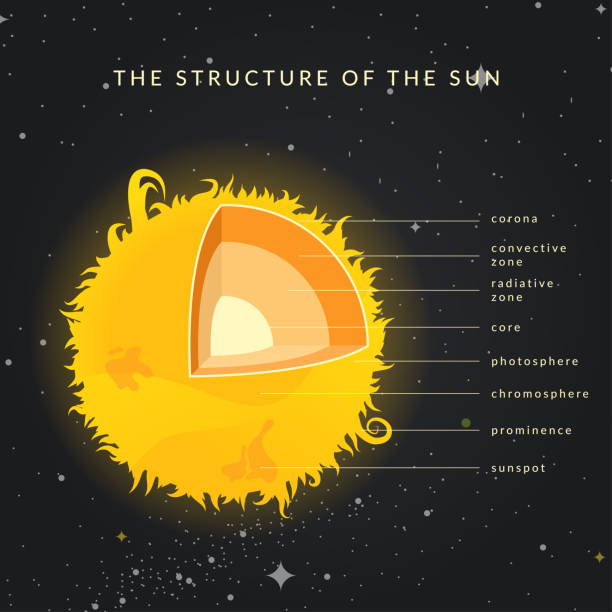
istockphoto https://www.youtube.com/watch?v=KMCb5relTTY -
There can be no photosynthesis without sunlight. Crops would cease to grow. Depending on the season, we may or may not receive one more harvest! Our herbivores would soon starve as they chewed their way through the last remaining foliage. We'd soon be starving as well. If the sun abruptly departs, Earth will experience absolute darkness after 8 minutes - the time it takes for its light to reach us. If darkness were the sole influence, it would take a long time for most life on Earth to perish.
However, there would be a quick drop in temperature, making survival more challenging. Because the sun is the center of gravity in our solar system, its departure would cause temporary anarchy among the remaining components, and the system may establish a new center after a few collisions. Perhaps Jupiter, or a new massive planet created as a result of Jupiter colliding with other things orbiting the sun. If Earth is fortunate enough to dodge these collisions and does not just fly out into space, it may begin to revolve around the new center.
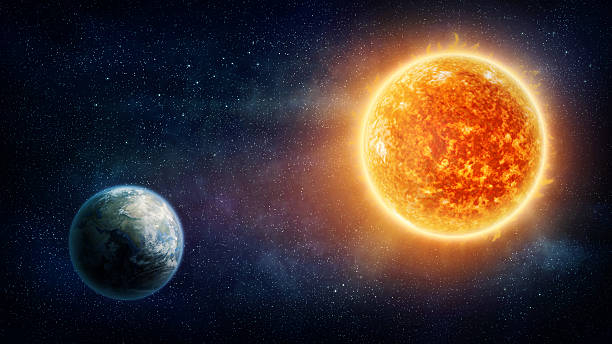
istockphoto https://www.youtube.com/watch?v=AV1zVKuEtFc -
A solar eclipse fully blocks the Sun because the Moon passes between Earth and the Sun. Even though the Moon is considerably smaller than the Sun, it may completely obscure the Sun's light from Earth's perspective because it is just the appropriate distance away. The Moon passes between the Earth and the Sun during a complete solar eclipse. This entirely shuts out the brightness of the Sun. The Moon, on the other hand, is 400 times smaller than the Sun. But it all comes down to the distance between the Earth and the Sun, as well as the Earth and the Moon.
However, there would be a quick drop in temperature, making survival more challenging. Because the sun is the center of gravity in our solar system, its departure would cause temporary anarchy among the remaining components, and the system may establish a new center after a few collisions. Perhaps Jupiter, or a new massive planet created as a result of Jupiter colliding with other things orbiting the sun. If Earth is fortunate enough to dodge these collisions and does not just fly out into space, it may begin to revolve around the new center. As a result, when the Moon passes between Earth and the Sun during a total solar eclipse, the Moon seems to fully block the Sun's light.
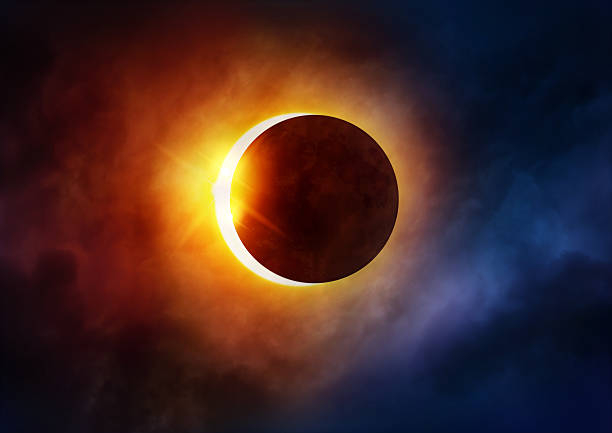
istockphoto https://www.youtube.com/watch?v=cxrLRbkOwKs -
The World Meteorological Association defines a precise metric for measuring daily and yearly average sunshine. When the direct solar irradiation exceeds a certain threshold of at least 120 watts per square meter, "sunshine hours" are monitored and counted toward the total. This is distinct from the visible sunlight seen at sunrise and sunset, which does not exceed this minimal level. Even in regions with abundance of apparent sunlight, cloudy weather, shadows, fog, and topographical characteristics can restrict daylight hours.
There is at least one day every year when the Sun does not rise and one day when it does not set in the Arctic and Antarctic circles. This is due to their proximity to the Earth's poles. On the summer solstice (June 21 in the north and December 21 in the south), the Sun does not set and does not rise (December 21 for the north and June 21 for the south). As a result, the Arctic and Antarctica are known as the "lands of midnight Sun" in the summer and the "lands of midday darkness" in the winter.
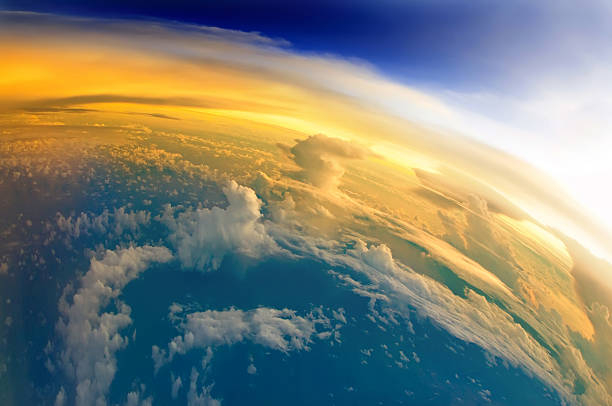
istockphoto 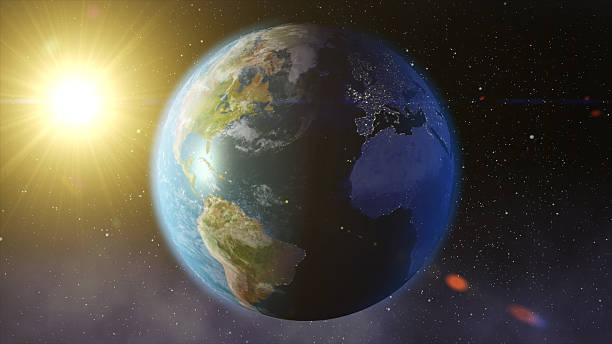
istockphoto -
The Sun is a main sequence star of the G type. The On the HR diagram, 'main sequence' component of the term relates to the fact that the Sun is at a point in its existence where hydrogen to helium conversion is the predominant fuel source. The stars in this phase are on the Hertzsprung-Russell (HR) diagram's main sequence. This graph plots the absolute magnitudes of stars against their surface temperatures.
The Sun is a 4.5 billion-year-old yellow dwarf star in the heart of our solar system, a hot glowing ball of hydrogen and helium. It is approximately 93 million miles (150 million kilometers) from Earth and is the solitary star in our solar system. Life as we know it could not exist on our home planet without the Sun's energy.
From our perspective on Earth, the Sun seems to be a constant source of light and heat in the sky. However, the Sun is a dynamic star that is continually changing and emitting energy into space. Heliophysics is the science of studying the Sun and its effects on the rest of the solar system.
istockphoto https://www.youtube.com/watch?v=ao9KEmWwJTc -
Observations of the distribution of neutral hydrogen gas in the 1960s revealed that our Sun is located somewhere above the Milky Way's mid-plane. Since then, a number of methodologies have been employed to estimate the Sun's position above the galactic plane. The majority of measurements are based on statistical studies of the distribution of stars, clusters, gas, and dust around the Sun, and estimates have ranged from 6 parsecs (1 parsec = 3.26 lightyears) to 42 parsecs.
The most current estimations place the distance at roughly 20 parsecs, or 65 lightyears. This distance, however, varies as the Sun rises and falls over its 230-250 million-year journey around the Galaxy. The Sun is thought to oscillate 2.7 times each 'galactic year,' with the most recent journey through the plane occurring roughly 3-5 million years ago. The Sun is considered to be able to travel 50-100 parsecs above or below the plane (between 163 and 326 lightyears).
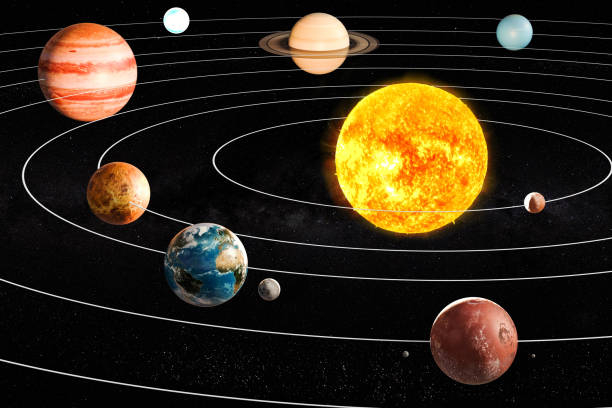
istockphoto https://www.youtube.com/watch?v=0Rt7FevNiRc -
The Sun is approximately 4 1/2 billion years old. Humans have only existed for a portion of this period. If you consider 4.5 billion years to be the length of a 12 inch ruler (or 30.5 cm ruler), the period humans have lived would be less than the width of the lines defining the inches.
For the next 5 billion years, the Sun will stay essentially unchanged. It will then exhaust the hydrogen it is now "burning" and start a new phase of existence. During this phase, the Sun will start "burning" helium and will grow to nearly 100 times its current size, becoming a red giant. When it runs out of helium, it will shatter into a much smaller object known as a white dwarf.
istockphoto https://www.youtube.com/watch?v=bD0SpfHy__o -
Have you ever stared at a bright light bulb only to have to turn away after a few seconds? The Sun, on the other hand, is nearly a million times brighter than a standard light bulb. This is why you may hurt your eyes: if you stare straight at the Sun, the inside of your eyes will burn badly and may never recover. You might permanently lose your sight. Scientists can only examine the Sun directly with the help of special tools designed to withstand the tremendous light.
The Sun also emits damaging ultraviolet (UV) light that can cause skin and eye damage. In fact, any tan is an indication of skin damage! A sunburn may sting for a while but harming your skin over time can lead to a variety of issues, including skin cancer. That is why, if you are going to be out in the sun for more than a few minutes, you should always use sunscreen with an SPF of 15 or higher. This is true even on overcast days; while not as bright as on sunny days, most of the dangerous UV radiation still passes through. It is important to note that having a tan offers minimal protection from skin damage, with an SPF of just approximately 2.
Use sunglasses that block out 100% of UV rays to help protect your eyes. When purchasing glasses, look for labels that state 100% UV Protection. People who do not safeguard their eyes while they are young are at danger of losing their sight as they age, including developing cataracts.

istockphoto https://www.youtube.com/watch?v=wEQ8gJLrbhk -
The Sun emits a variety of 'colors' of light. Just as there are noises that people cannot hear, most of the 'colors' of light that the Sun emits are invisible to humans. Visible light is what we can see with our eyes. It contains every hue of the rainbow: red, orange, yellow, green, blue, and purple. The energy content of red light is lower than that of the other hues in the rainbow. Then follows orange, then yellow, and finally purple, which has more vitality than the previous hues.
The Sun emits light with even greater energy than purple. One form of this light is ultraviolet (UV), and it can cause sunburn. X-rays, which you get when you go to the dentist, are another sort of high-energy light. X-rays are also light! We simply cannot see them. Infrared, microwave, and radio light have less energy than visible light. Your microwave uses microwave light that we cannot see to heat your meal. When you turn on a radio, you are emitting a form of light that you cannot see. All of these types of light are emitted by the Sun and the stars!

istockphoto https://www.youtube.com/watch?v=AP6WDOwHBhQ -
The visible Sun is a massive ball of plasma, or electrified gas, with no solid surface like the Earth or Moon. It has a typical temperature of 5700 deg. K, which is much above the melting temperatures of Earth's materials. Despite this, we can only see its very outer layers since the gas is opaque. The impression is similar to that of a cloud, which is made up of water molecules yet seems to have a fluffy surface. The photosphere is the Sun's outer visible surface, which is just a few hundred kilometers thick.
The photosphere is the top of the solar convection zone, where convective gas movements carry solar energy to the outer surface across the last quarter of the solar radius. The chromosphere is an inhomogeneous layer that extends 10,000 km above the photosphere. It's best described as the transition from the photosphere to the corona. The tenuous corona, which may extend several million kilometers into the interplanetary medium, is the Sun's extreme outermost extent.
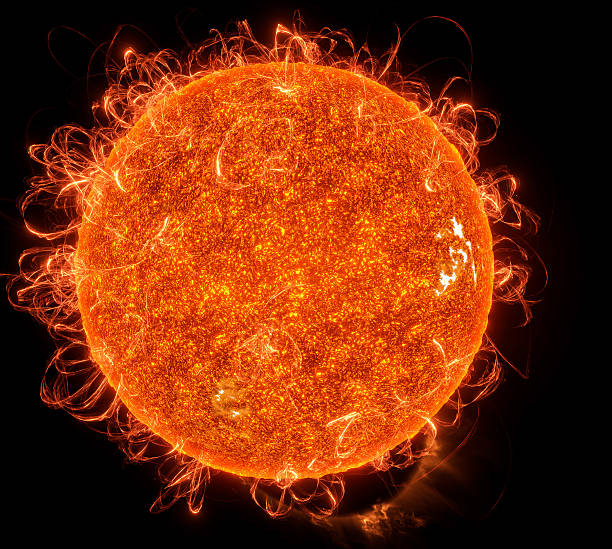
istockphoto https://www.youtube.com/watch?v=2U3ucaVzRqQ -
The Sun's balance is maintained by the mutual gravitational pull of all its atoms acting to compress the solar core. These gravitational forces generate and contain the nuclear events occurring there. The solar atmosphere beyond the energy-generating core adapts to transport the massive quantity of energy that radiates from the surface.
This is the fundamental concept behind the existence of all stars, from gravitational attraction and the compression of a gas cloud through the start of nuclear energy generation and, eventually, to the exhaustion of nuclear fuel and the star's death.

istockphoto 
istockphoto














